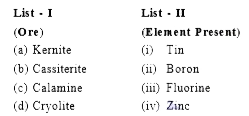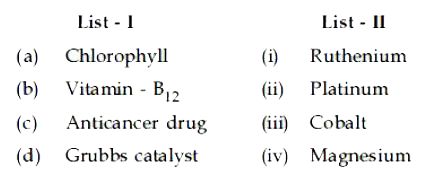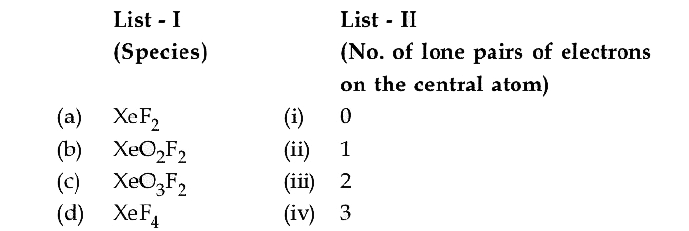Given below are two statements:
Statement I: In redox titration, the indicators used are sensitive to change in pH of the solution.
Statement II: In acid-base titration, the indicators used are sensitive to change in oxidation potential.
In the light of the above statements, choose the most appropriate answer from the
options given below
Both Statement I and Statement II are correct
Statement I is incorrect but Statement II is correct
Both Statement I and Statement II are incorrect
Statement I is correct but Statement II is incorrect
To solve the question, we need to analyze both statements provided in the question regarding redox titration and acid-base titration.
Step 1: Analyze Statement I
- Statement I claims that in redox titration, the indicators used are sensitive to changes in pH of the solution.
- This statement is incorrect. In redox titrations, the indicators are sensitive to changes in oxidation potential, not pH. The redox indicators change color based on the oxidation state of the species in the solution.
Step 2: Analyze Statement II
- Statement II claims that in acid-base titration, the indicators used are sensitive to changes in oxidation potential.
- This statement is also incorrect. In acid-base titrations, the indicators are sensitive to changes in pH. Acid-base indicators change color at specific pH levels, which indicates the endpoint of the titration.
Step 3: Conclusion
- Both statements are incorrect based on the definitions and characteristics of indicators used in redox and acid-base titrations.
- Therefore, the most appropriate answer is that both statements are incorrect.
Final Answer: Both Statement I and Statement II are incorrect.
---
- Statement I claims that in redox titration, the indicators used are sensitive to changes in pH of the solution.
- This statement is incorrect. In redox titrations, the indicators are sensitive to changes in oxidation potential, not pH. The redox indicators change color based on the oxidation state of the species in the solution.
- Statement II claims that in acid-base titration, the indicators used are sensitive to changes in oxidation potential.
- This statement is also incorrect. In acid-base titrations, the indicators are sensitive to changes in pH. Acid-base indicators change color at specific pH levels, which indicates the endpoint of the titration.
- Both statements are incorrect based on the definitions and characteristics of indicators used in redox and acid-base titrations.
- Therefore, the most appropriate answer is that both statements are incorrect.
Topper's Solved these Questions
Similar Questions
Knowledge Check
- Question 1 - Select One
Match List - I with List- II

Choose the most appropriate answer from the options given below -A(a)→(i),(b)→(iii),(c)→(iv),(d)→(ii)B(a)→(ii),(b)→(i),(c)→(iv),(d)→(iii)C(a)→(ii),(b)→(iv),(c)→(i),(d)→(iii)D(a)→(iii),(b)→(i),(c)→(ii),(d)→(iv)
Match List -I with List-II :

Choose the most appropriate answer from the option given below:View SolutionMatch List - I with List -II

Choose the most appropriate answer from the options given below :View SolutionMatch List -I with List -II :

Choose the most appropriate answer from the option given below:View SolutionMatch list - I with List - II :

Choose the most appropriate answer from the options given below :View SolutionMatch List -I with List -II :

Choose the most appropriate answer from the options given below :View SolutionMatch List - I with List - II

Choose the most appropriate answer from the options given below :View SolutionMatch List-I with List-II :

Choose the most appropriate answer from the options given below :View Solution


